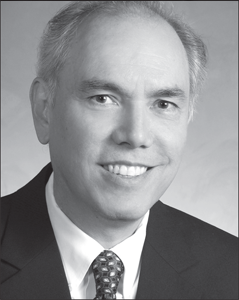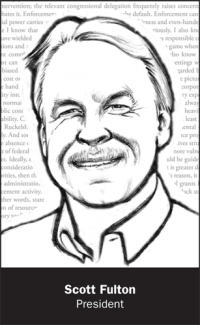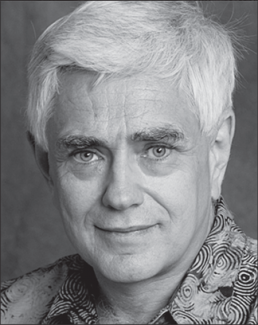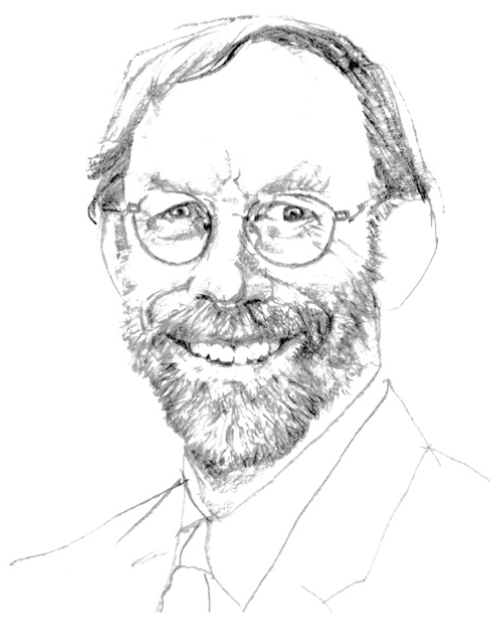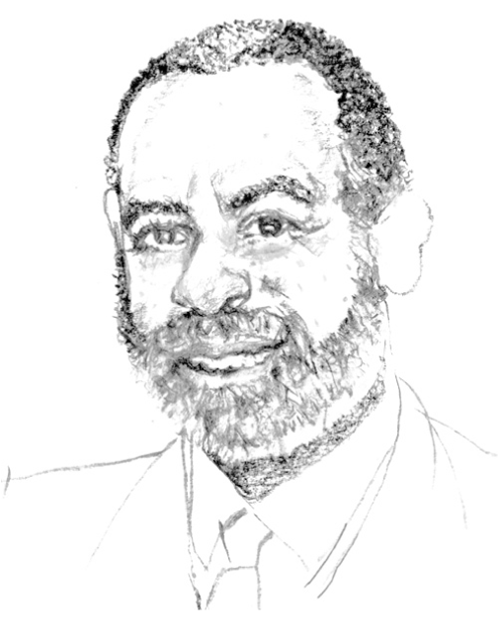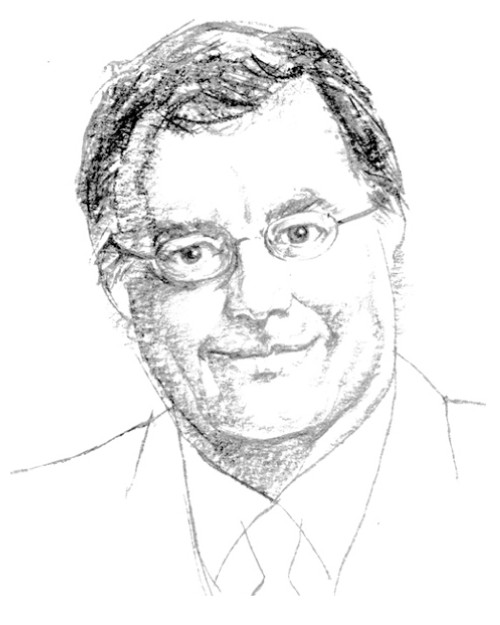Since its establishment 47 years ago, the U.S. Environmental Protection Agency has had overarching enforcement responsibility for most of the nation’s federal environmental laws. But over the decades, states have developed the expertise and capacity for ensuring environmental protection. With the Trump administration’s proposed downsizing of EPA’s budget and staffing and renewed focus on states, decisionmakers and stakeholders have a timely opportunity to rethink the paradigm of cooperative federalism and environmental protection.
For decades, EPA has played the role of the “gorilla in the closet,” the looming threat of federal enforcement if regulated entities did not cooperate with state enforcement efforts. But if less federal enforcement is on the horizon, how can environmental compliance be assured? In considering this question, the Environmental Council of the States has proposed that a periodic audit system take the place of federal intervention in delegated states. How would an audit system of this kind work in practice, and what are the implications of this kind of change?
Meanwhile, environmental data are being generated at an exponential rate, and other actors, namely localities and international regimes, are increasingly asserting their roles in environmental governance.
At the ELI-Miriam Hamilton Keare Policy Forum, held just before the annual Award Dinner, an expert panel discussed the opportunities and challenges of a new take on cooperative federalism for environmental governance. The conversation considered trends in politics, economics, technology, and other factors influencing environmental protection.
How will information technology and interconnectivity change environmental enforcement and accountability? How can governments, advocates, and businesses evaluate this information and use it to ensure compliance? What do forces outside the federalism dichotomy mean for the future of environmental governance in a global economy and society unconstrained by state or national borders?
“Big data, the 24-hour news cycle, and hyper-transparency have the potential to disrupt the federal-state relationship, but there are also opportunities”
Stan Meiburg
Director of Graduate Studies in Sustainability
Wake Forest University
Moderator
“Environmental justice has been embedded in each and every one of the laws that EPA administers. How is that going to change as a result of this
cooperative federalism?”
Barry E. Hill
Visiting Scholar
Environmental Law Institute
“We at GE believe climate change is real. Pollutants don’t respect boundaries. Which raises the issue of state-federal relations and international relations as well”
Neal Kemkar
Director of Environmental Policy
General Electric
“Some view EPA as a helicopter parent to the states. Sometimes it’s a matter of letting our children grow up and understanding that programs have matured”
Becky Keogh
Director
Arkansas Department of Environmental Quality
“Cooperative federalism is really about the how, not the what. As to the what, people will agree we should breathe clean air and should have access to clean water”
Bob Martineau
Commissioner
Tennessee Department of Environment and Conservation
“We’ve got to reach out to the public and commit to the highest levels of transparency and really inclusive dialogue. We’ve got to be thinking about adaptive federalism”
Vickie Patton
General Counsel
Environmental Defense Fund
Stan Meiburg: Here is a reading from Federalist #51.
“In the compound republic of America, the power surrendered by the people is first divided between two distinct governments, and then the portion allotted to each is subdivided among distinct and separate departments. Hence a double security arises to the rights of the people. The different governments will control each other, at the same time that each will be controlled by itself.”
This tension between two sovereigns can be destructive, as it was in the Civil War, but it can also be creative, with states serving as laboratories for democracy. The field of environmental protection is no exception to this tension and this opportunity.
Our first speaker on our federalism and environmental protection is Barry Hill. Barry is a visiting scholar at the Environmental Law Institute. He worked at EPA for many years as senior counsel for environmental governance in the Office of International Affairs, and as the director of the Office of Environmental Justice.
Barry Hill: There are four questions that I would like to pose. The first question is whether or not this cooperative federalism is new and what makes it so?
During the Clinton administration, I worked on EJSEAT — the Environmental Justice Strategic Enforcement Assessment Tool. Then the Bush administration came in and they said, “It’s now going to be called Environmental Justice Smart Enforcement Assessment Tool.” Same acronym, and at EPA we loved acronyms. Other than that one word, nothing really changed. So, I thought about that as it related to this thing called cooperative federalism and whether it is new.
The second question is whether a new cooperative federalism means we are going to abandon everything that has been done over the last 40 years or so in the environmental law and policy area. Will EPA no longer be the overseer?
The third question relates to environmental justice. Since the office was established 25 years ago, environmental justice has been seen as embedded in each and every one of the laws that EPA administers. How is that going to change as a result of this cooperative federalism?
The final question is whether this cooperative federalism is used as a sword or shield. In announcing the rollback of the Clean Power Plan, Administrator Pruitt said, “We can now assess whether further regulatory action is warranted; and, if so, what is the most appropriate path forward, consistent with the Clean Air Act and principles of cooperative federalism.”
Really? What does that mean?
He went on to state, “The previous rule ignored states’ concerns and eroded longstanding and important partnerships that are a necessary part of achieving positive environmental outcomes.” Was that a sword or shield?
Stan Meiburg: Neal Kemkar is the director of environmental policy at General Electric. Before joining GE, he worked for the White House Council on Environmental Quality, the secretary of the interior, and the governor of Colorado.
Neal Kemkar: At GE, we have 300,000 people operating in 180 countries. I want to boil up our experience into several megatrends.
The first is digitization. The number of connected devices will reach 50 billion by 2020. In a few years, we may all have personal air quality monitors in our pocket that tell you the levels of PM 2.5 in your exact neighborhood. How do we capture these terabytes of data?
Second is fossil fuel abundance. In the last decade, we have seen a tenfold increase in U.S. shale gas production and a 50 percent reduction in oil prices. Our collective challenge is ensuring that the resulting production and consumption are as efficient as possible. How does that interplay with that industry’s social license to operate?
The third is growing resource stress. We at GE believe climate change is real, the science is settled. Pollutants don’t respect boundaries, which raises the issue of state-federal relations and of course international relations as well.
Last is this idea of competitive clean energy. In the midst of digitization, fossil fuel abundance, and resource stress, we’ve also witnessed unprecedented innovation in the clean energy space. Costs have declined dramatically. Solar costs have come down 75 percent over the last decade. Wind power installed capacity has grown ten times.
More connected devices, fossil fuel abundance for the foreseeable future, intensifying resource stress that increasingly doesn’t respect boundaries, and competitive clean energy. These are the megatrends we face.
Stan Meiburg: Becky Keogh is vice president of the Environmental Council of the States. She has served as the director of the Arkansas Department of Environmental Quality since 2015.
Becky Keogh: One thing we need to remember is that states had environmental programs many years prior to the 1970s. Our agency has existed since the 1940s. And many issues were addressed not by a federal agency or a state but by cities.
Back then, we didn’t have the benefit of today’s technology, nor did we have the tens of thousands of trained professionals in environmental sciences and technologies that we do today. At our agency, we now have apps for many of our services, something that we never had before. That raises the question of how we channel this technology into our regulatory world, making sure that we are driving the technology in the direction we want it to go.
Some view EPA as sort of a helicopter parent to the states. Sometimes it’s a matter of letting our children grow up and understanding that these programs have matured. Many of these programs have delivered the outcomes that we originally sought. They’ve now graduated from college, many of them have jobs, they have their own children.
Looking at a case in Arkansas, we have regulations that declare that if you get a handful of water samples from a stream with a certain percentage of pollutants, then we will do something about it. Now we have monitors that take samples every 30 seconds and we’re trying to apply that data against a standard that used to be based on a set of eight samples over two seasons. Are the problems we are seeing today really an indication of a natural problem or is it just an indication that we know a lot more?
Stan Meiburg: Bob Martineau has been the commissioner of the Tennessee Department of Environment and Conservation since 2011. Bob is a past president of ECOS and worked in EPA’s Office of General Counsel.
Bob Martineau: Given limited resources, we don’t want to duplicate efforts. We shouldn’t be doing the same thing twice and checking every little bit of homework. So, how do we divide and conquer our limited resources and continue to build the federal-state relationship? It is important to keep in mind that first and foremost, it’s about environmental outcomes.
What we’re talking about in cooperative federalism is really that relationship of how, not necessarily the what. As to the what, as a general principle, people will agree we should breathe clean air and should have access to clean water. We may debate whether the standard ought to be so many parts per billion or that many parts per billion, but at the end of the day, the public wants to know if their air is clean, if their water is safe to drink, if the land around their house and their local school is safe to play on. How do we continue to prosper economically while ensuring that we have those?
A lot of people used to bristle at the term “co-regulator.” The common understanding is that states are not just another external stakeholder in the environmental regulatory enterprise; they are partners. We can’t develop a set of regulatory principles without looking at how they are going to be implemented in the field. The states, which are doing 90 percent or so of that implementation, need to think about the environmental outcomes we seek.
If we look at how cooperative federalism relates we have to differentiate between the regulatory side and the program implementation side and the enforcement side. States need flexibility to achieve their goals. At the same time, there are local, state, cross-state, and even international impacts to what happens in a particular state.
As we set air quality standards, such as new source performance standards, or water quality standards, we need to ensure that we have a race to the top, recognizing there is huge political pressure and economic pressure on given states to site that new plant.
So, as we frame that debate and add in private environmental governance, we can see that many people are making these decisions independent of any regulatory construct. Their shareholders are demanding it. Their customers are demanding it. Companies like Walmart have said, “We want X percentage of our energy to be renewable by a date certain.” Leadership in companies are driving marketplace decisionmaking regardless of what the regulatory requirements are.
Stan Meiburg: Vickie Patton is the general counsel of the Environmental Defense Fund and manages the organization’s national and regional clean air programs. Before coming to EDF, she worked as an attorney for EPA.
Vickie Patton: In my experience, there is no cookie-cutter approach to cooperative federalism. In fact, those people who have done this work for a long time find different ways to engage in problem-solving. As a result, we have made tremendous progress.
I’d like to make a few points. First, the “what” matters. What are we trying to achieve? It’s hard to have a debate about the “how” if we don’t have a shared understanding of the what. My view is the what ought to be delivering ambitious public health and environmental outcomes, while making continuous progress. We need to commit ourselves to what the American people expect, so that all communities benefit, especially those that have for far too long suffered a heavy burden of public health and environmental harms.
We can’t shy away from the most important challenge of our time, climate change. Support for climate action is at a zenith. In my own home state of Colorado we’re delivering cleaner energy, saving customers money, putting wind turbines in parts of rural Colorado that are keeping families on their farms. We’re manufacturing those turbines in rural parts of Colorado like Windsor and Pueblo that are gaining shared prosperity from this vibrant clean energy economy. Let’s roll up our sleeves and make sure that climate change is a critical part of this dialogue.
We’ve got to win the public trust. Whenever these discussions start, people are skeptical about where it is all headed, what the objectives really are. We’ve got to reach out to the public and commit to the highest levels of transparency and really inclusive dialogue. We’ve got to be thinking about adaptive federalism.
Finally, how do we create, collectively and individually, the platforms that recognize the environmental and public health outcomes that we need? How do we reward innovation that actually achieves more protective results? How do we create the platforms that reward inclusive dialogues and partnerships so that all across all the different levels of government and policymaking, public and private, we’re sending all of those right signals? There are a lot of people who are working together finding ways to deliver these kinds of results. It is good news, and America needs a little bit of good news.
Stan Meiburg: Several of you talked about how the nature of the relationship may have changed between federal and state environmental authorities. That poses a related question. Is the division of authority in the environmental space a zero-sum game? Does one have to go down for the other to go up?
Becky Keogh: We don’t want to have 50 states doing 50 different things. It makes sense to act collectively — we see that in regional groups and in national groups. It is best not deciding that one entity is better than the other to take on a certain responsibility but to instead discern which has the “most value-added methodology,” as my governor would say, to get the outcome that we need in our communities. One of the times I rely on EPA is the type of emergency where I need scientific capabilities that go beyond my state laboratory.
Bob Martineau: It isn’t a zero-sum game. The challenge has been avoiding duplication of effort and to decide what sovereign can act most efficiently. And then there are a whole bunch of things we haven’t been able to tackle because we haven’t shifted some of those resources to take on those new challenges. The debate today is the most efficient allocation of resources — how do we efficiently do the basic blocking and tackling, and then what resources can either the state provide or the federal government to take on new challenges.
Stan Meiburg: There are calls for statutory change to fully realize the potential for stronger state-federal relationships. Do any of you think that we need new law for this purpose?
Neal Kemkar: I’ll start with a short answer here — I hope not, because this issue is way too important to rely on Congress, a broken institution. What we have already is years of delegated authority to the federal executive branch from Congresses past. We have a lot of collective expertise. And when you add in our friends in the NGO community as well as in the regulated community, a lot of folks have been thinking about these issues for a long time. It goes back to resource allocation and using the existing authorities in smarter ways.
Barry Hill: You know, a lot depends upon where you sit as it relates to this whole area of environmental law and policy. I’m thinking in terms of communities where they are asking, Is the air clean? Is the water safe to drink? What about communities where the answer is “no” to everything? So, what would you prefer? Would you prefer the federal government, the strong arm of the federal government, or would you prefer that states do it — states are 50 laboratories of democracy but how do you define democracy? How do you ensure environmental justice for all not as a theory but as a practical matter? It’s not just the ederal government, it’s not just the state government, it’s not just corporations. It’s communities. How are they being impacted? That is the central question in the federal-state relationship.
Vickie Patton: There is ample room within existing law for people to improve upon achieving public health and environmental outcomes, while thinking about what sort of partnerships will help and how to most effectively achieve society’s goals. There are many people who have a lot of experience within the framework of existing law, finding all sorts of innovative ways to move forward.
Becky Keogh: And I would just add perhaps not statutory change at the federal level. Some of the state statutes, a lot of us are looking at opening up old statutes where they haven’t been refreshed. That’s something we’re doing in Arkansas. Other states have done the same. We haven’t just invested in the regulation or the statute for their own sake. We are spending a lot of time as we look at our programs through the lens of lean processes to make sure we don’t lose the core value of what we do as we speed up and we become more efficient and hopefully spend less money in delivering those outcomes.
Stan Meiburg: What do you see from your particular vantage point as the greatest challenge to implementing collaborative federalism?
Bob Martineau: The perception is that cooperative federalism means weakening environmental standards. That’s not what it is. But it’s caught up in the anti-regulatory mindset that we don’t want to over-regulate — it’s hindering business, it’s killing jobs. We’ve got to get agreement on the goals and maybe if we’re not there on that, about what the outcomes are. We need to have that debate first because then the question is how. There’s maybe less consensus on some of the goals now than we’ve had historically.
Back to the last question of reopening the statutes: what’s happened sometimes with the various amendments to the statutes over the years is that they have become more prescriptive. The idea was to set the goal, a maximum, for example, and let the states figure out how to achieve that max. Instead, each time the Clean Air Act was amended, it became much more prescriptive as to what had to be in that State Implementation Plan. So, those statutory provisions can be used as swords or shields as well.
The challenge of federalism is to agree on the basic goals, and then we need the trust to be less prescriptive on the day-to-day review of what the other entity is doing.
Vickie Patton: If there’s not a shared vision that we are seeking better public health outcomes and greater justice for the communities that have borne the burden of harmful impacts for far too long and meanwhile combating climate change — those are core central underpinning considerations — then I think there will be enormous public distrust.
There is another disruptor coming to the architecture of environmental law and policy and that is that every person is going to have a monitor in their pocket. The technology is already here. In the aftermath of Hurricane Harvey, EPA’s and Texas’s monitors were idled but Environmental Defense Fund deployed a lab-quality mobile monitor, communicating what we were finding to policymakers and the public. Think about a world where the parents in Flint had the easy ability to detect the lead in their water. Technology is going to be a game changer in holding all of us accountable.
Neal Kemkar: Vickie, that’s a great point. To me, the radical transparency that’s coming because of increased digitization and more people having more information, that’s the biggest challenge and opportunity to this Cooperative Federalism 2.0. I think back to my time working for the secretary of the interior during the oil spill, every night during the nightly news you had radical transparency of the oil flow real time. That changes the dynamic of the regulation. It makes the feds tend to be be more prescriptive, for example, “Well, no. Thou shalt have 2.15 blind shear rams on your blowout preventer,” or whatever.
With all this transparency, the challenge is going to be getting the balance right. So, one can imagine a world where people on an airplane are saying, “I want to know exactly the carbon output of this flight” so they can offset it. Or a corporate official saying, “I want to know the carbon footprint of my entire supply chain and I want to know it now.” And so, as we wrestle between the state and the federal control, we may be overtaken by events.
Bob Martineau: And it’s not only the transparency but it’s the 24-hour news cycle, it’s the instant information. Twenty years ago, you took a water sample and the results came back a month later. Today, you’ve got to have that answer two hours from now. People want to know, Can I drink the water? Can I walk outside if there’s an air incident? Do I need to evacuate? You can’t say, “We’re going to look at it and get back to you after we send this off to a lab on the other side of the country and we’ll write a report that’ll get edited by 38 people and you’ll see it in three months.” That’s not acceptable.
Becky Keogh: I recall working with city leaders in Little Rock on ozone. We were right below the standard, and some people believed things needed to be proactively addressed. And someone said, “Is it safe to breathe the air?” And to be frank, I don’t think our regulatory framework is set up to be instantaneous in response.
Barry Hill: Millennials and many corporations are very much concerned about climate change, and they are making decisions based on their concern. Why isn’t the federal leadership listening to the voices of all of these entities? And will it be better at the state level? And how does this administration talk to a state like California that’s very progressive as it relates to the issue of climate change? The biggest impediment is listening to the voices of all of the stakeholders, whoever they may be.
Audience question: The one thing I didn’t hear from the panel is where does the conversation restart. Because the conversation that we used to have very constructively since I grew up has broken down. We look at our two major parties and they not only aren’t really effectively talking to each other but the Republicans aren’t even talking effectively to themselves, and it’s not certain that the Democrats are doing that either.
One of the advantages of a federal system, if one is going to make one work, is that it has 50 laboratories with their sub-laboratories where experimentation in dealing with these questions can be going on, and if we had a system for articulating that up to the national level, that could be part of the solution.
However, our federalism has never really worked all that well from the get-go and it started with the fact that the Founders, for all the wonderful things they did, did not really grapple effectively with the question of states’ rights. And it’s understandable they didn’t because it all started with the states, they had the power, they had to be convinced even to allow a federal structure to emerge. And that’s plagued us all along.
My final lament is that when you look to the states at present, I don’t know where to look for a model. You can take on the one hand California, which became dysfunctional in its governance before the country did, and they’ve now become a lot more functional but they’ve done it mainly because the Republicans have taken themselves out of the conversation and the Democrats are bound and determined to keep them there if they can. Or you can look at Kansas, which has been working with a terrible model for eight years now, it’s been proven not to work, and a few people in the state are beginning to wake up to that but the people keep re-electing their government.
Vickie Patton: My only comment is that you’ve got a conversation happening right here. It’s up to all of us to have these conversations wherever we work. It’s a real challenge in this polarized world not to let ourselves just fall into a trap. We have to focus on what compels us to do this work, why we care about it, and find a way to have conversations that are uncomfortable with people that may not share our ideas and try to find common ground.
Stan Meiburg: Several of you talked about the potential of big data to be disruptive. I’d like to ask how — in your individual states or your companies or NGOs — are you looking at this challenge.
Vickie Patton: It’s a terrific opportunity. We have seen the impact of big data and advanced monitoring techniques in a bunch of different contexts. When you think about the recognition that there’s significant venting and leaking from oil and gas facilities, big data and monitoring have had a huge public health and environmental impact by revealing this serious pollution problem — making it far more salient. And advances in monitoring that have helped reveal this oil- and gasrelated pollution to the public and to policymakers have also catalyzed the deployment of solutions and policies that are sprinting to catch up.
We have a need to be really responsible with the information, but it does provide a tremendous opportunity to empower policymakers, private companies, and the public to improve public health and environmental outcomes. It’s a critical part of the next wave of environmental protections.
Becky Keogh: Our challenge will not be the data anymore. It will be the wisdom to know what data to actually base decisions on. Smart systems are not valuable if you’re not wise in how you use them. We have to make sure that we build credibility in those datasets so we can have frank and honest discussions about whether action is necessary or not.
Bob Martineau: I think big data has two aspects we need to consider. Consumers start asking how many kilowatts of electricity do you use to make your product, do you recycle, how much clean energy do you use in your process, because people will weigh that in their consumer purchasing decisions and who they invest in.
On the other side, there is the pressure of the 24-hour news cycle. Let’s say there is a pipe rupture or a discharge incident. As the media cover it, it’s really going to be incumbent on the public to educate themselves on how to manage that data, and sometimes an initial piece of information may be a valid indicator but it may not be. Suddenly there’s a huge public health crisis that turns out to be a lab sampling error.
Transparency is good. You want to be able to respond if there is a public health emergency. You don’t want to wait 30 days to find out you need to do something.
Becky Keogh: And I’ll add to that. The benefit of big data and technology is in a political world, as an engineer, and I speak to politicians all the time in our legislature, data generally will compel an answer. And so, you can depoliticize the conversation with data if you use it appropriately. You can remove the politics when you actually have facts, right? It also provides a bit of equality or perhaps addresses inequality in systems because now you have the information to show where those inequities exist and you can actually act on them.
Neal Kemkar: The good news for all of us is that there is a fierce competition going on in America’s boardrooms in the space of big data and advanced analytics, and the power of American innovation has been unleashed on this particular issue. We have what we call our new digital wind farms, which through both hardware and software — through improved asset performance — you’re able to operate 20 percent more efficiently, save about $100 million per farm.
And to take a different context, from the oil and gas space, the way we used to inspect pipelines, hydrostatic testing, you pressurized the pipe to see if it blew. Now we can use MRI technology on a “smart pig” that we run through the pipe to take a scan instead. You can imagine the environmental implications of that, when the regulations catch up. Similarly, for the outside of the pipe we can use drones to inspect 10 times faster at one tenth of the cost.
So when we’re talking about environmental regulation, let’s not just think of the statutes that we all grew up with and took in our environmental law survey classes but let’s think of brand new greenfield spaces, like how do we set the right framework for unmanned air systems so that when the commercial and technological ability to inspect a 400-mile pipeline via drone is there, that the regulations are in place to allow it.
Audience question: Josh Heltzer, First Environment. I’m just curious as to what the relationship is between the Environmental Council of the States, the National Governors Association, and, say, U.S. EPA or the federal government? Is there an interface among those organizations, either in an informal or formal manner?
Becky Keogh: ECOS evolved from the National Governors Association, and we continue to work with NGA on a number of initiatives. We also are working very closely with EPA. That was the intent of the Cooperative Federalism 2.0 paper, to provide information we thought would be helpful to define a road forward with the idea that we weren’t going to dictate the path nor would the federal government dictate it.
To your question, all that dialogue is important, and obviously one of the bases of ECOS is that as much as states are alike we are different. So our goal as an organization is to find our common issues and be able to advance those appropriately, allowing the governors and EPA to work with states to respect their needs — even if they don’t necessarily agree with my state or my governor’s perspective.
Stan Meiburg: And I would just note, to put on my old hat for just a minute, that this is not a partisan question because that kind of collaboration has been going on for a long time. When I was at EPA, Commissioner Thomas Burack of the New Hampshire Department of Environmental Services and I advanced collaborative federalism through E-Enterprise. That dialogue is going on pretty robustly.
Becky Keogh: I think states understand that to have the authority or trust or independence, there’s also accountability. We are working with our governors and with the federal EPA about how do we communicate our accountability to achieve agreedon outcomes.
Audience question: Just following on Neal’s point, I think it’s really interesting that this is the Environmental Law Institute, and lawyers base everything on precedent. The question came up earlier about whether you see any need for statutory change. I’ll just note most of our great environmental statutes were born out of crises. The crisis in Bhopal, India, helped lead to the Toxics Release Inventory and the Superfund Amendments and Reauthorization Act. You had Love Canal that led to CERCLA.
But we don’t tend to pass new laws anymore to address big problems. We might look to the states as being labs and yet the way cooperative federalism is set up, the state statutes tend to mirror the federal environmental statutes, and if a state gets out in front, then they’re put at a business disadvantage.
Stan Meiburg: Historically the worry about states was that somehow that if the federal oversight were not there, that the state would lag behind. It is going to be very interesting about what the response is now in the case where a state may move ahead — and I am thinking about California — and how the response to that is going to fit into the federalism framework.
At this time, let me not just summarize this panel but just make a couple of points.
One is that you’ve heard a lot of very innovative and thoughtful discussion about the potential effects of big data and technology and the 24-hour news cycle and what you might call hyper-transparency, and that these have both the potential to be quite disruptive in the way in which the federal-state relationship has worked, but there are opportunities involved as well, and that’s going to be a challenge in the years ahead.
I also wanted to make an observation pointing back to the comments about federal laws. They were very prescriptive and written that way for a couple of reasons, one of which was in the era in which they were created, there was a great deal of distrust between the legislative and the executive branch, and the legislative branch felt that if they did not make the laws very prescriptive that the executive branch would not implement and enforce them. So, that the issue of trust is there.
There was also a great deal of concern in public policy theory that without very prescriptive laws, that the agencies in charge with implementing them, and specifically EPA and the states’ agencies, would be captured by the entities that they regulated.
The idea of capture may seem like an antiquated notion these days, but the distrust became embedded in the very specificity of the statute, rightly and wrongly, and the problem with that of course is that if you have a very rigid statute and you don’t change it very much, like anything else, it can get a little long in the tooth.
Also, just simply note to close out that the answer to the question I asked about whether it is a zero-sum game, I was delighted to hear that nobody said it is. For the states to be strong, it’s not like the federal government has to be weak or vice versa. What you’d really like in an environmental system is two strong partners working effectively to produce environmental results.
And to pick up on the point that Vickie made, one of the challenges we face, the big challenge, is if we do not have some way of discussing and coming to a reasonable agreement on goals, then the discussion about means becomes even more difficult.
It is worth remembering that the Founders in the framing of the Constitution were not really concerned about producing efficient government. The fear on the part of the framers was that you would have tyrannical government, and so therefore, the effort was to produce moderate government — which is why you ended up with federalism structures and the separation of powers in the first place.
In an era in which things seem to happen in a 24-hour news cycle, this can sometimes produce great frustration. But it is probably worth recognizing that there may be some wisdom in not being able to react immediately to everything that comes right down the pike. TEF
